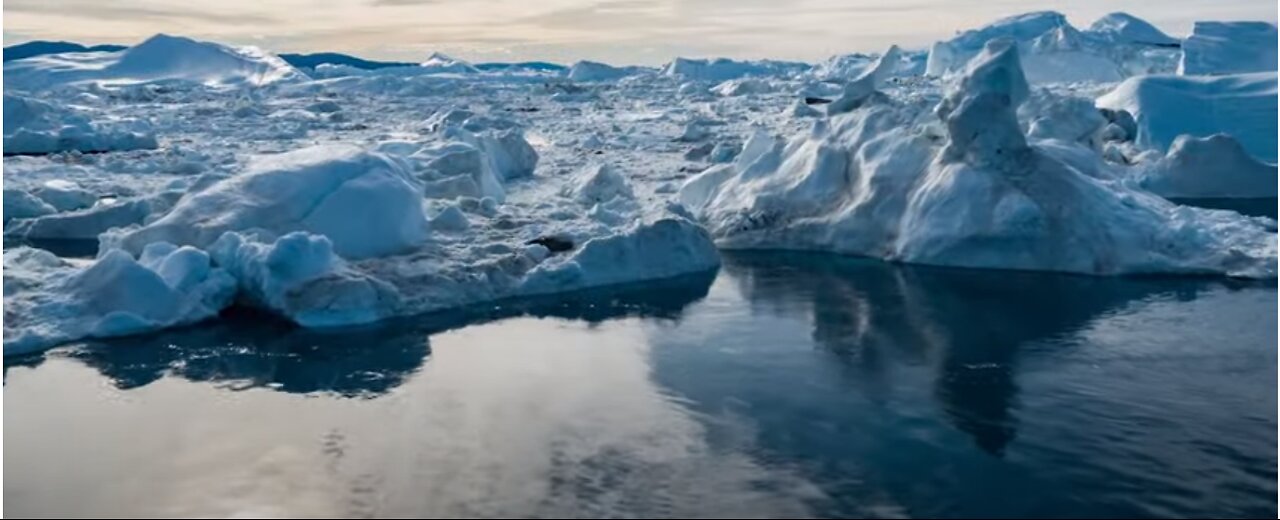Premium Only Content

A Mission to Better Understand Earth’s Polar Regions (Mission Overview)
#nasa #NASAprefiremission #prefire #earth #earthexploration #climate #climatechange #globalregion #polar #polarregion #polarenergy #FarInfrared#experiment #ractic #antarictic #tropics #tropicregion #sunenergy #wolfchamp
A Mission to Better Understand Earth’s Polar Regions (Mission Overview)
NASA’s PREFIRE mission aims to improve global climate change predictions by expanding our understanding of heat loss at the polar regions. The Polar Radiant Energy in the Far-InfraRed Experiment (PREFIRE) will send two shoebox-size satellites into space to study the Arctic and Antarctic. They’ll be the first to systematically measure heat in the form of far-infrared radiation emitted from those regions.
Earth absorbs much of the Sun’s energy at the tropics. Weather and ocean currents then move that heat toward the poles, which help regulate Earth’s climate by radiating that heat back into space. But the Arctic is warming about three times faster than anywhere else on Earth, and that’s leading to increased ice sheet melt and sea level rise in coastal communities. The data from PREFIRE will help scientists better understand how Earth’s polar regions respond to climate change and what that might mean for the future.
For more information: https://science.nasa.gov/mission/prefire
Credit: NASA/JPL-Caltech/University of Wisconsin
A Mission to Better Understand Earth’s Polar Regions (Mission Overview)
NASA’s PREFIRE mission aims to improve global climate change predictions by expanding our understanding of heat loss at the polar regions. The Polar Radiant Energy in the Far-InfraRed Experiment (PREFIRE) will send two shoebox-size satellites into space to study the Arctic and Antarctic. They’ll be the first to systematically measure heat in the form of far-infrared radiation emitted from those regions.
Earth absorbs much of the Sun’s energy at the tropics. Weather and ocean currents then move that heat toward the poles, which help regulate Earth’s climate by radiating that heat back into space. But the Arctic is warming about three times faster than anywhere else on Earth, and that’s leading to increased ice sheet melt and sea level rise in coastal communities. The data from PREFIRE will help scientists better understand how Earth’s polar regions respond to climate change and what that might mean for the future.
For more information: https://science.nasa.gov/mission/prefire
Credit: NASA/JPL-Caltech/University of Wisconsin
A Mission to Better Understand Earth’s Polar Regions (Mission Overview)
NASA’s PREFIRE mission aims to improve global climate change predictions by expanding our understanding of heat loss at the polar regions. The Polar Radiant Energy in the Far-InfraRed Experiment (PREFIRE) will send two shoebox-size satellites into space to study the Arctic and Antarctic. They’ll be the first to systematically measure heat in the form of far-infrared radiation emitted from those regions.
Earth absorbs much of the Sun’s energy at the tropics. Weather and ocean currents then move that heat toward the poles, which help regulate Earth’s climate by radiating that heat back into space. But the Arctic is warming about three times faster than anywhere else on Earth, and that’s leading to increased ice sheet melt and sea level rise in coastal communities. The data from PREFIRE will help scientists better understand how Earth’s polar regions respond to climate change and what that might mean for the future.
For more information: https://science.nasa.gov/mission/prefire
Credit: NASA/JPL-Caltech/University of Wisconsin
A Mission to Better Understand Earth’s Polar Regions (Mission Overview)
NASA’s PREFIRE mission aims to improve global climate change predictions by expanding our understanding of heat loss at the polar regions. The Polar Radiant Energy in the Far-InfraRed Experiment (PREFIRE) will send two shoebox-size satellites into space to study the Arctic and Antarctic. They’ll be the first to systematically measure heat in the form of far-infrared radiation emitted from those regions.
Earth absorbs much of the Sun’s energy at the tropics. Weather and ocean currents then move that heat toward the poles, which help regulate Earth’s climate by radiating that heat back into space. But the Arctic is warming about three times faster than anywhere else on Earth, and that’s leading to increased ice sheet melt and sea level rise in coastal communities. The data from PREFIRE will help scientists better understand how Earth’s polar regions respond to climate change and what that might mean for the future.
For more information: https://science.nasa.gov/mission/prefire
Credit: NASA/JPL-Caltech/University of Wisconsin
A Mission to Better Understand Earth’s Polar Regions (Mission Overview)
NASA’s PREFIRE mission aims to improve global climate change predictions by expanding our understanding of heat loss at the polar regions. The Polar Radiant Energy in the Far-InfraRed Experiment (PREFIRE) will send two shoebox-size satellites into space to study the Arctic and Antarctic. They’ll be the first to systematically measure heat in the form of far-infrared radiation emitted from those regions.
Earth absorbs much of the Sun’s energy at the tropics. Weather and ocean currents then move that heat toward the poles, which help regulate Earth’s climate by radiating that heat back into space. But the Arctic is warming about three times faster than anywhere else on Earth, and that’s leading to increased ice sheet melt and sea level rise in coastal communities. The data from PREFIRE will help scientists better understand how Earth’s polar regions respond to climate change and what that might mean for the future.
For more information: https://science.nasa.gov/mission/prefire
Credit: NASA/JPL-Caltech/University of Wisconsin
-
 UPCOMING
UPCOMING
Inverted World Live
3 hours ago700 Scientists and Faith Leaders Warn About Super-Intelligent AI, "Time is Running Out" | Ep. 130
764 -
 LIVE
LIVE
TimcastIRL
2 hours agoFOOD STAMPS OVER, Ending Nov 1, Food RIOTS May Spark Trump INSURRECTION ACT | Timcast IRL
25,763 watching -
 2:18:46
2:18:46
Tucker Carlson
2 hours agoTucker Carlson Interviews Nick Fuentes
18.2K121 -
 LIVE
LIVE
Drew Hernandez
11 hours agoCANDACE OWENS CALLS CHARLIE KIRK STAFF INTO QUESTION?
1,033 watching -
 47:03
47:03
Barry Cunningham
4 hours agoPRESIDENT TRUMP MEETS WITH THE PRIME MINISTER OF JAPAN!! AND MORE NEWS!
14K12 -
 LIVE
LIVE
Flyover Conservatives
20 hours agoThe Dollar Devaluation Playbook: Gold, Bitcoin… and the “Genius Act” - Andy Schectman | FOC Show
366 watching -
 LIVE
LIVE
SpartakusLIVE
4 hours agoWZ Tonight || Battlefield 6 BATTLE ROYALE Tomorrow!
128 watching -
 LIVE
LIVE
megimu32
2 hours agoON THE SUBJECT: Halloween Nostalgia! LET’S GET SPOOKY! 👻
156 watching -
 1:24:56
1:24:56
Glenn Greenwald
4 hours agoThe Unhinged Reactions to Zohran's Rise; Dems Struggle to Find a Personality; DHS, on Laura Loomer's Orders, Arrests UK Journalist and Israel Critic | SYSTEM UPDATE #538
92.4K54 -
 LIVE
LIVE
Spartan
3 hours agoBack from worlds. Need a short break from Halo, so single player games for now
61 watching